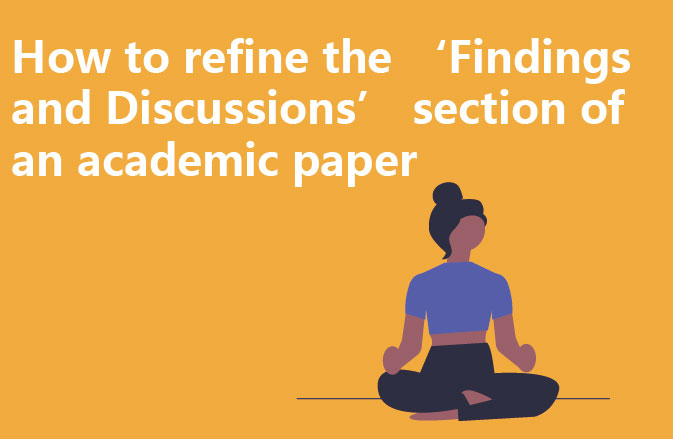Today we are going to discuss a mysterious yet exciting topic – how to refine the Findings and Discussions section of an academic paper. I will provide you with detailed and practical guidance from both quantitative and qualitative perspectives. Let’s embark on this challenging and rewarding academic journey together!
First, let’s look at how the Findings and Discussions section of a quantitative paper is structured. In this section, we need to report our findings and discoveries in detail. Please note that the focus here is on describing your findings, not on analysing or evaluating them in depth. Therefore, there is no need to introduce too much theoretical knowledge.
Next, we will move on to the ‘Discussions’ section. Here we need to analyse and discuss your findings in depth. Firstly, we need to review and restate the direction and objectives of your research (this may involve some of the theoretical content of the literature review). Then, briefly describe your research hypotheses and their sources.
Then, were your research hypotheses confirmed? If confirmed, with which other studies does this result coincide or differ? And what new insights can this result bring to theory and practice? If your hypothesis was not confirmed, what other studies does this result share similarities with? What studies does this result conflict with? What are the potential reasons why the hypothesis was not confirmed? Is there a need to retest the hypothesis in the future?
During the discussion, we also need to focus on the following points:
1. all discussions should be closely centred on the research question and the hypothesis. 2.
2. avoid in-depth data analysis in the Findings section (as this is the task of the Discussion section) and simply describe the data objectively (e.g., trends, differences, relationships, etc.).
3. Consider placing data that are less relevant to the research question in an appendix. 4.
4. The syntax of the ‘Findings’ section should be in the past tense. 5.
5. All conclusions must be highly relevant to the research question and hypothesis. 6.
6. In writing the Findings section, it is important to build on a substantial empirical foundation of prior research and to be cautious of under-examined data and theories.
Next, we will discuss strategies for writing the Findings and Discussions section of the qualitative paper. In this section, we also need to report our findings in detail. Please note that the emphasis here remains on describing your findings rather than analysing or evaluating them in depth.
In the ‘Discussions’ section, we need to analyse and discuss your findings in depth. Firstly, we need to review and restate the direction and aims of your research (this may involve some of the theoretical elements of a literature review). Then, briefly describe your research hypotheses and their sources.
Then, were your research hypotheses confirmed? If confirmed, what other studies does this result coincide with or differ from? And what new insights can this result bring to theory and practice? If your hypothesis was not confirmed, what other studies does this result share similarities with? What studies does this result conflict with? What are the potential reasons why the hypothesis was not confirmed? Is there a need to retest the hypothesis in the future?
During the discussion, we also need to focus on the following points:
1. all discussions should be closely centred on the research question and the hypothesis. 2.
2. avoid in-depth data analysis in the ‘Findings’ section (as this is a task for the ‘Discussion’ section), and simply describe the data objectively (e.g., trends, variances, please try again later).




